LD Systems – VA4 “affordable and compact” – Test Report by Production Partner
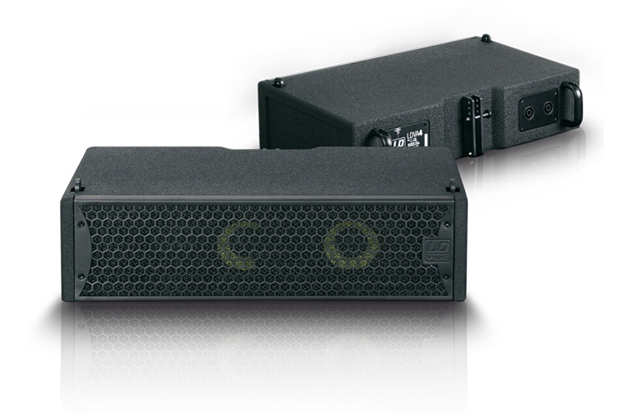
LD Premium VA4 Line Array speaker
Compact, affordable VUE line array from LD Premium with the V 215B subwoofer
Adam Hall’s Premium label includes multifunctional enclosures with 8″, 10″, 12″ and 15″ systems, three subwoofers loaded with 1 x 15″, 2 x 15″ and 2 x 18″ speakers and also two line arrays. The larger of the two is a 2 x 8″ system, the smaller a 2 x 4″. The latter, with the type designation VA4, is also the subject of this test report, together with the 2 x 15″ V 215B subwoofer. With a width of 480 mm and a height of 139 mm, the VA4 belongs to the class of compact line arrays typically used on small stages by club acts or as fills in conjunction with larger systems. They are also popular for use as sidefill or drum monitors in situations where high volume and precise directivity are desired.
The systems, which are developed in Germany, are manufactured in the Far East and for the most part loaded with chassis from in-house production. The available mounting hardware includes a flying bar and a speaker stand stirrup as well as a ground stacking kit. The stirrup can handle a maximum of four VA4s and fits on any standard speaker stand. The extremely light flying bar, which weighs in at just 3.8 kg, is BGV-C1 certified and holds up to 16 VA4s. Because ground stacking on a subwoofer is also an especially popular option with small line arrays, there is also a matching mounting set for the V 215B subwoofer and up to six VA4s, which can be fastened to the upright sub and angled using the set.
For this, it is only necessary to attach three mounting brackets to the subwoofer, which is also exactly 480 mm wide. Together with the 1.06 m high subwoofer, it is then possible to set up a VA4 array on smaller stages so that the array is positioned at the appropriate height, just above the heads of the audience. As an additional accessory for portable use of the VA4, there is also a transport case for up to six enclosures.
VA4
Let’s take a closer look at the VA4. The extremely light box, which weighs just 9.6 kg, is built of 15 mm multiplex and covered with a sturdy textured finish. The front is protected by a rugged grille backed with thin foam. All of the flying mechanics are built into the cabinets, so that all that is still required are two ball lock pins for the front connectors and one for the rear connector. It is also possible to adjust the angle between the speakers on the rear.
The available settings are 0, 2, 4 and 6 degrees. A maximum curving angle of six degrees seems astoundingly small for such a small system, given that, in strictly mathematical terms according to the WST (Waveform Sculpture Technology) theory, angles of up to nearly 20 degrees would be possible. Things get interesting inside the VA4. Three ultra-modern drivers get down to business there: two 4″ woofers with Kevlar membranes and neodymium magnets and a 1″ tweeter, also with a neodymium magnet, which acts on a small waveguide. They are controlled actively, i.e., there is no internal passive crossover.
There is only a protective capacitor ahead of the tweeter which will save the life of the tweeter in an emergency if the cabinet is accidentally connected improperly. The active controller may seem unusual for such small speakers at first glance, but it offers a lot of advantages while adding little or nothing to the cost. Because line arrays are usually used in large numbers, any cost comparison must include the additionally required power amp channel as well as four or even eight passive crossovers.
Irrespective of cost, the active mode also offers many additional advantages: Precise adjustment of the time alignment between tweeter and woofers is possible. The individual paths can be filtered more exactly and, very importantly, the limiters can be adapted precisely to the speakers separately for both paths, which always requires making compromises with passively isolated systems.
When it came time to test the VA4, first we tested the two paths of one box individually. Fig. 1 shows the associated frequency response curves, stating the sensitivity relative to 1 W input power with a nominal impedance of 16 ohms for a distance of 1 m. In this test, the two 4″ woofers together attain approx. 84 dB at 100 Hz and rise continually from there to a maximum of approx. 92 dB at 1.6 kHz. These values seem low at first glance, but it should be remembered that we are dealing with a comparatively small 4″ chassis. Moreover, the impedance curve reveals very genuine 16-ohm behaviour, in which even the minimum impedance is still 16 ohms.
The tuning frequency of the bass-reflex enclosure reads out to be 78 Hz, meaning that the VA4 can be operated down to around 70 Hz without the risk of irregular membrane deflection, which is fully adequate for full-range capability. The tweeter, which is a compression driver, is much louder by nature. Its frequency response curve is around the 100 dB mark, which is attained already at 1 kHz. Since the driver resonance is substantially higher at 1.5 kHz, however, the separation from the woofers should not set in until 2 kHz or higher.
Subwoofer V 215B and Amping
In comparison with the VA4, the V 215B subwoofer is a substantially larger and heavier box which, when loaded with 2 x 15″ speakers, weighs in at just under 8o kg. The two chassis act as direct emitters on a generously built bass-reflex enclosure with external dimensions of 1,060 x 475 x 620 mm. The drivers used have 4″ voice coils and ferrite magnets, which, while substantially heavier than neodymium magnets, evidence favourable temperature behaviour especially for heavy-duty woofers, since these magnets have a much higher thermal capacity. Externally, the enclosure, which is constructed of 18 mm multiplex, is every bit as solidly designed as the VA4.
The features include a sturdy textured coating, recessed handles on the sides, a rugged front grille backed with foam, and optional rollers on the back and recessed holders for the feet of the next box when stacking. As in the VA4, the electrical connection is made via NL4 sockets with a link connection. In combination with the VA4, a ratio of one V 215B for every four VA4s is recommended. If one first regards the test results for the V 215B alone without a controller, it is apparent that, also from the point of view of acoustics, we are dealing with a genuine heavyweight here.
The V 215B is useable starting at 30 Hz and attains a sensitivity of 95 dB already at 40 Hz, which then rises steadily to approx. 100 dB at 200 Hz. The bass-reflex enclosure is tuned to 34 Hz with generously proportioned tunnels that also permit high volumes with little port compression. The LD Premium line includes a complete rack for controller and amping. In a stereo configuration, four VA4s per side are driven by an SP4K power amp for the LF path and an SP1K8 for the HF path. If necessary, an additional SP4K can drive the V 215B. If two subwoofers per side are used in parallel in 2-ohm mode, then it is advisable to use an SP6K with 2 x 3 kW on 2 ohms. The controller used is also the company’s own DPA-260 with two inputs and six outputs.
Measured values
Fig. 5 shows the filter frequency response curves of the controller both for the VA4 in full-range mode as well as with the V 215B subwoofer. The separation within the VA4 takes place at approx. 1.9 kHz and the woofers are limited downward at around 70 Hz, which seems dangerously low at first glance for a 4″ chassis, but proved to be entirely feasible in the listening test. Together with the subwoofer, the separation takes place at 120 Hz, which noticeably eases the strain on the VA4. Fig. 6, in which the VA4 acquits itself very well, shows how this looks all in all.
The spectrogram of the VA4 shows two somewhat larger resonances at 500 Hz and 1.2 kHz, which were also already apparent in the frequency response curve and are probably attributable to enclosure resonances. The maximum level measurement was carried out with a four enclosure array with and without a subwoofer, which is equivalent to a small standard configuration. If one first looks at just the VA4, then a stately 120 dB is attained in the working range of the woofers, which rises to 130 dB at 2 kHz. A look at the sensitivity curves and the available amplifier output of 2 x 1.4 kW for the woofers and 2 x 600 W for the tweeter unit, then the woofers are limited above all by the limiter in the controller. An additional indicator of this is the collapsing of the max. SPL curves for 3 % and 10 % THD in wide frequency ranges. The curves only separate clearly with a difference of 10 dB above 1 kHz. The subwoofer with max. SPL of 130 dB demonstrates that it can keep up easily on the bass end even with the highest demands. Thus in some circumstances, one V 215B would even be sufficient for an array of 8 VA4s.
Das Spektrogramm der VA4 lässt zwei etwas größere Resonanzen bei 500 Hz und 1,2 kHz erkennen, die auch im Frequenzgang bereits zu erkennen waren und vermutlich auf Gehäuseresonanzen zurückgehen. Die Maximalpegelmessung wurde mit einem 4er-Array mit und ohne Subwoofer ausgeführt, was einer kleinen Standardkonfiguration entspricht. Schaut man sich zunächst nur die VA4 an, dann werden in deren Arbeitsbereich für die Tieftöner recht amtliche 120 dB erzielt die sich bei 2 kHz auf 130 dB steigern. Sieht man sich die Sensitivitykurven und die zur Verfügung stehende Verstärkerleistung von 2 x 1,4 kW für die Tieftöner und 2 x 600 W für die Hochtoneinheit an, dann werden die Tieftöner vor allem durch den Limiter im Controller begrenzt. Ein weiteres Indiz dafür ist auch das Zusammenfallen der Max.-SPL-Kurven für 3 % und 10 % THD in weiten Frequenzbereichen. Erst oberhalb von 1 kHz separieren sich die Kurven dann deutlich mit 10 dB Differenz. Der Subwoofer zeigt mit seinen 130 dB Max.-SPL deutlich, dass er auch bei gehobenen Ansprüchen im Bass locker mithält. Unter Umständen würde ein V 215B daher auch sogar für ein 8er-Array aus VA4 reichen.
Directivity
Looking at the design of the VA4 with two adjacent 4″ tweeters and a crossover frequency of approx. 2 kHz, it becomes clear that the stated 120° horizontal cannot be maintained throughout. Fig. 11 shows that an increasing constriction of the isobars sets in already starting at 800 Hz, which expands to approx. 50° up to 2 kHz. Above that point, the tweeter kicks in, which causes the isobars to open up wide again. However, the acoustic beam width does not remain constant here either. The -6 dB isobar constricts here from an initial 160° to 80°. Vertically, there is the usual continuous constriction for line array elements from the bass to the treble frequencies. Starting at approx. 12.5 kHz, the previously constantly increasing isobars then begin to open up, which is manifested in the measurements of a four enclosure array with curving angles of 0, 2, 4 and 6 degrees between the individual boxes. Initial problematic positions with the coupling of the tweeters with one another turn up with a curving angle of 6°.
Listening test
For the listening test, we set up two sets, consisting of three VA4s each plus subwoofer with the matching amp rack, in the anechoic chamber. We listened to this combination with and without subwoofers. The variant with the VA4 in full-range mode sounded so convincing in the bass range that even the Adam Hall product manager attending the test rushed up to the speakers sceptically to put his ear to the subwoofer. In any case, the high-pass filter, which is set to 70 Hz, seems to have been tuned optimally to permit pleasant sounding full-range reproduction, until at some point the limiter has to spring into action.
At higher levels, of course, the 4″ speakers eventually run up against their natural limits. Together with the subwoofer, the VA4 was substantially more relaxed with a solid foundation even in the very low bass range. It is easy to envision using a setup of this kind as a club PA for DJ sets or also for four-corner sound reinforcement on a dance floor, since the reproduction stays very high in fidelity and pleasant in all areas even at short distances. If a classic guitar band is taking the stage and powerful low/mids are called for, then larger array configurations with eight or more units would be recommendable.
Conclusion
With the VA4 line array, LD Premium offers an extremely compact line array which, loaded with 2 x 4″ speakers and a 1″ tweeter, is universally configurable and useable. Even smaller arrays with three or four units are highly suitable for full-range use and, with the V 215B subwoofer, can be expanded into a complete PA system. In terms of sound, the system is top drawer, even at high volumes and short distances. From a metrological point of view, there are bound to be some compromises made with this concept, above all with regard to directivity. The horizontal isobars inevitably jump at the crossover from the two 4″ speakers to the tweeters.
In practice, however, this is not as noticeable as the measurement would seem to indicate. The matching amp and controller rack seems sturdy, as do the actual loudspeakers. The accessories are also well done. The light flying bar, the speaker stand stirrup, and the ground stacking set all seem well thought out and are pleasantly easy to use. All in all, the VA4 is a compact, high-quality little line array with a few acceptable compromises and a lot of advantages. Above all, these include quality workmanship and a good sound. In this connection, the highly affordable price is especially gratifying.
Prices
VA4 Line array element 790,00 €
V 215B 2 x 15″ subwoofer 1.099,00 €
Flying bar 178,00 €
Case 6 xVA4 758,00 €
Speaker stand stirrup 4 x VA4 358,00 €
Power amp SP1K8 1.195,00 €
Power amp SP4K 1.595,00 €
Power amp SP6K 1.950,00 €
Controller DPA260 895,00 €
More Information at:
http://www.ld-systems.com/en/series/premium-array-series/va-4-dual-4-inch-line-array-speaker/
____________________________
Figures:

Fig. 1: Frequency response and sensitivity of the LF (red) and HF (blue) paths in the VA4. In terms of sensitivity, it is important to remember that we are talking about 4″ mid/bass drivers and a small 1″ tweeter. Thus values on the order of 87 dB for the woofers and 100 dB for the tweeter can indeed be said to be quite high.

Fig. 2: Impedance response of the LF (red) and HF (blue) paths in the VA4. Both paths are nominally 16-ohm systems with non-critical minimums that comply with the standards. The tweeters are protected by a preceding capacitor, as is apparent from the increase in the blue impedance curve at lower frequencies. The woofers in their bass reflex enclosure are tuned to 78 Hz.

Fig. 3: Frequency response and sensitivity of the V 215B subwoofer loaded with 2 x 15″ speakers. The sub is useable already starting at 30 Hz and attains a sensitivity of 95 dB already at 40 Hz.

Fig. 4: Impedance response of the V 215B subwoofer with a forgiving minimum of 3.7 ohms at the tuning frequency of 34 Hz

Fig. 5: Controller functions for the VA4 with/without subwoofer. Without (solid red line), the woofers in the VA4 are driven until around 70 Hz. With subwoofer, they are disconnected at 120 Hz. The diagram above shows the curves for the array EQ for 4x VA4 with an angulation of 0°, 2°, 4° and 6° respectively.

Fig. 6: Frequency response of the VA4 without (red) and with (blue) subwoofer. On the whole, this results in a very pleasantly balanced frequency response. The narrow drop at 500 Hz was not compensated for on purpose.
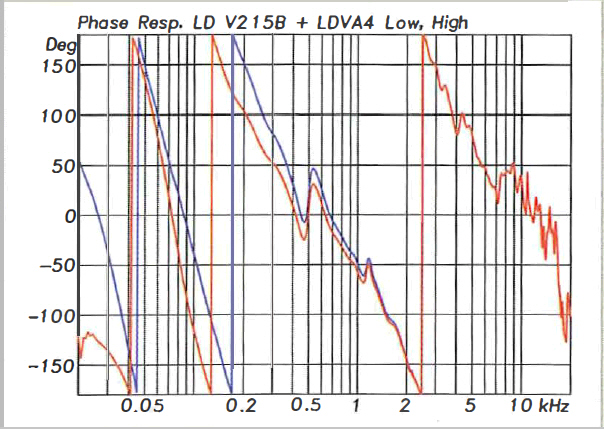
Fig. 7: Phase response of the VA4 without (red) and with (blue) subwoofer. The separations are implemented with fourth order filters, likewise the high-pass filtering for the VA4 in full-range mode at the lower end of the frequency response curve.
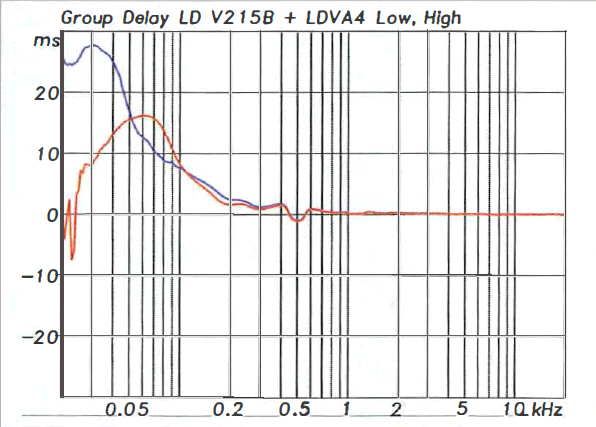
Fig. 8: Travel time behaviour of the VA4 without (red) and with (blue) subwoofer. With subwoofer, the curve rises to a still moderate maximum of 28 ms, which results from the acoustical high-pass function of the bass reflex enclosure in conjunction with a second order electrical high-pass filter.
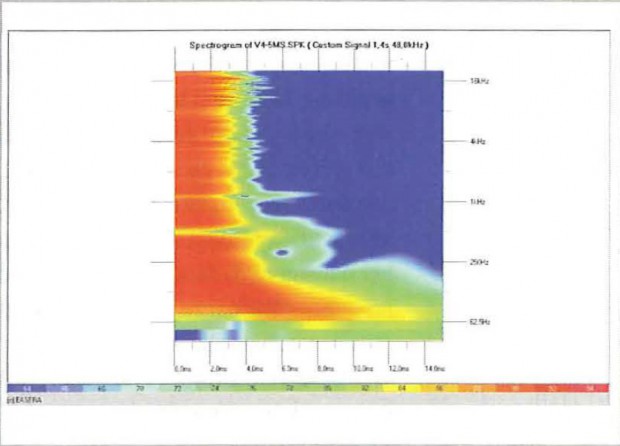
Fig. 9: Spectrogram of the VA4 with two somewhat larger resonances at 500 Hz and 1.2 kHz, which were also already apparent in the frequency response curve.
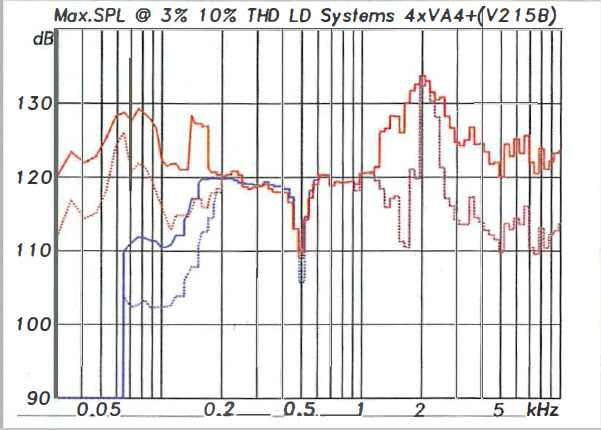
Fig. 10: Maximum level for a maximum of 3 % (dashed curves) and 10 % THD (solid curves) for 4 x VA4 in full-range mode (blue) and with V 215B subwoofer (red)
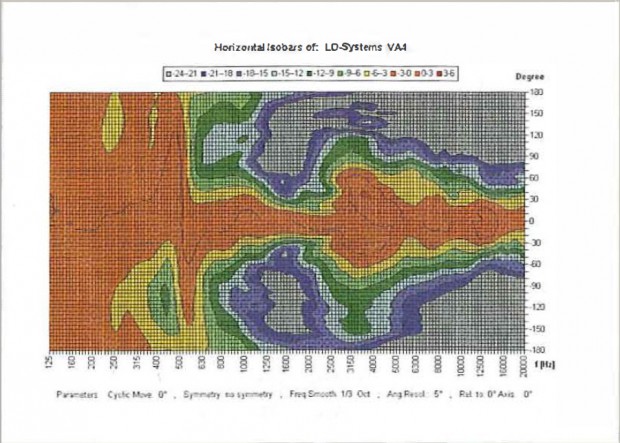
Fig. 11: Horizontal isobars of the VA4 with the inevitable break in directivity at the crossover from woofer to tweeter at 2 kHz
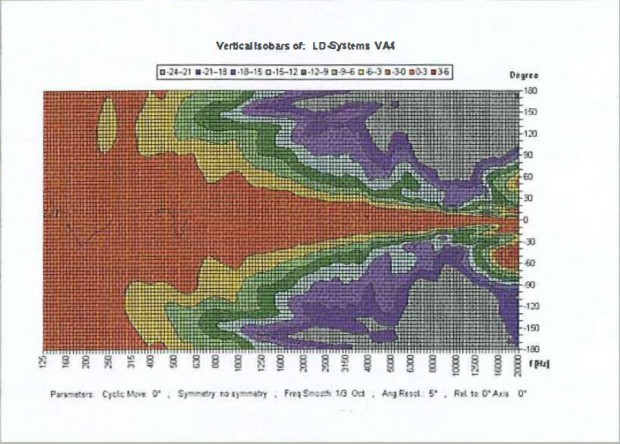
Fig. 12: Vertical isobars of the VA4; above 14 kHz, the wavefront begins to run away from the waveguide.
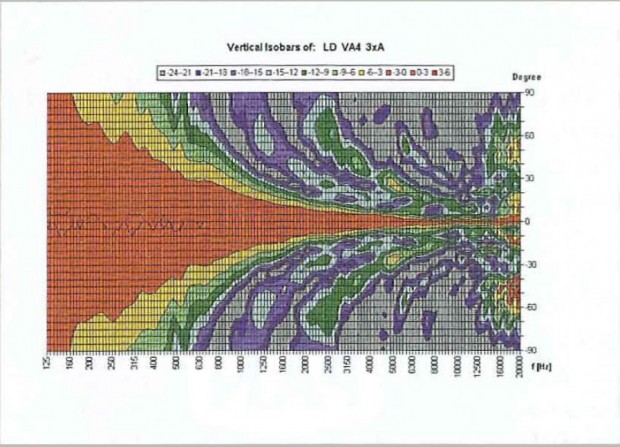
Fig. 13: Vertical isobars for three VA4s with an angulation of 0° relative to one another
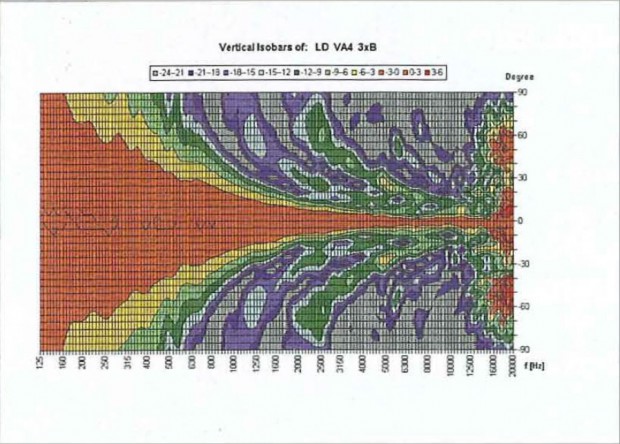
Fig. 14: Vertical isobars for three VA4s with an angulation of 2° relative to one another
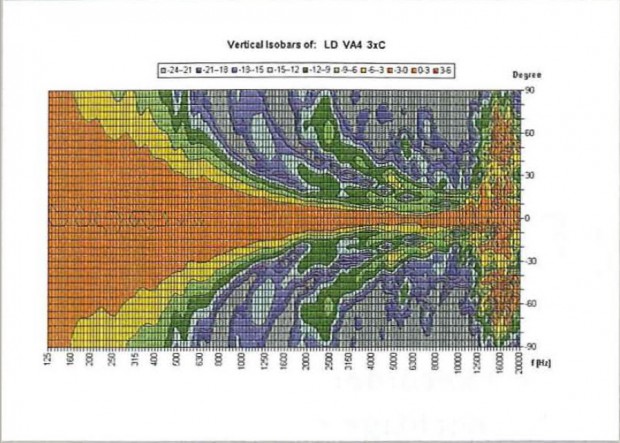
Fig. 15: Vertical isobars for three VA4s with an angulation of 4° relative to one another
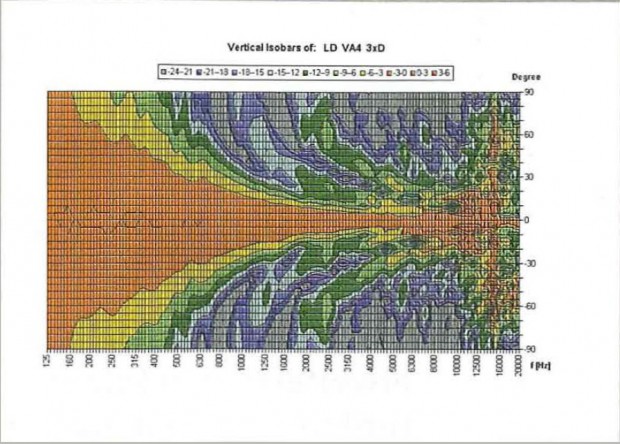
Fig. 16: Vertical isobars for three VA4s with an angulation of 6° relative to one another
Text and measurements: Anselm Goertz
Photos:Dieter Stork
For additional specifications and product information, please visit:
http://www.adamhall.com/en/VUE_Array_VA4_Series.htm
Quelle: Production Partner Magazine März 2010
Leave a Comment
You must be logged in to post a comment.











